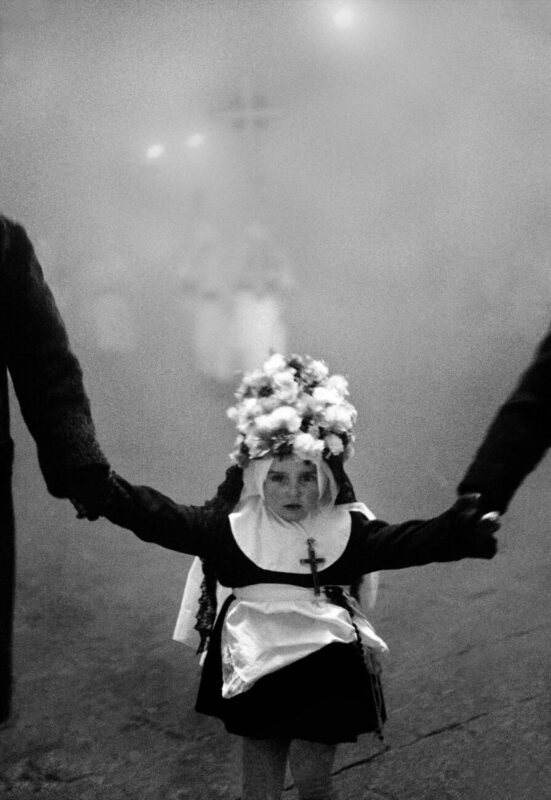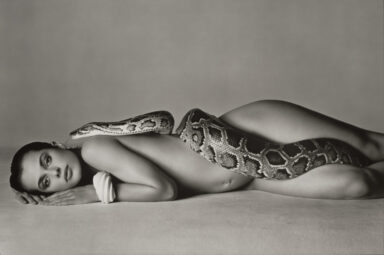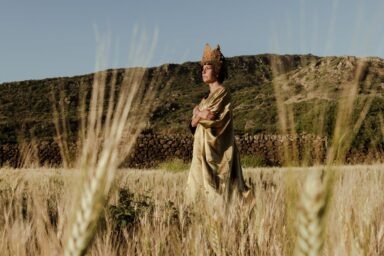Wars, weddings, people, communities. All worlds, stories and ethnographic realities that the lens of photographer Ferdinando Scianna explores and immortalizes in black and white. Palazzo Reale hosts a major anthological exhibition: “FERDINANDO SCIANNA- VIAGGIO RACCONTO MEMORIA” from March 22 to June 5, 2022
Text by: Domenico Costantini

The exhibition Ferdinando Scianna – Viaggio Racconto Memoria is curated by Paola Bergna, Denis Curti and Alberto Bianda (art director), produced and promoted by Comune di Milano – Cultura, Palazzo Reale and Civita Mostre e Musei.
With more than 200 black and white photographs printed in different formats, the exhibition spans the entire career of the great Sicilian photographer and develops along an articulated narrative path, built on different chapters and different ways of setting up. Ferdinando Scianna is one of the masters of photography, not only Italian. He began to be passionate about this language in the sixties, telling through images the culture and traditions of his home region, Sicily. His long artistic career winds through various themes – current events, war, travel, popular religiosity – all linked by a single thread: the constant search for a form in the chaos of life.
Eight are the sections that narrate the exhibition: it starts from The Memory (Bagheria -The Sicily -The Religious Celebrations), passing through The Tale (Lourdes -The Children -Kami -The Pain), Obsessions (The Sleep -The Things -The Shadow -Beasts -The Mirrors), The Journey (America -Deambulations -The Places), Portraits, Rites and Myths (The Ceremonies -Women -Marpessa), closing with two important unpublished sections, Leonardo Sciascia and Bibliography, the first dedicated to his friend, “father”, mentor and long-time teacher, the writer Leonardo Sciascia.
Light in Sicily can be a malediction. Dramatic, destructive, revealing and impenetrable at the same time, in dialectical relationship with its opposite, the shadow. It is not by chance that Scianna photographs starting from the latter, taking shelter in it to see better in the glare. This is why his images are often dark, material.
Since the first ones taken during religious festivals, in the early sixties, in which the mystery of religion becomes a metaphor for a more laic and liberating explosion of the collective unconscious.
In the summer of 1963 he exhibited the series on the processions of Bagheria. To see the exhibition also goes the writer Leonardo Sciascia that leaves him a ticket of appreciation. Immediately after reading it, Scianna goes to look for him “alla Nuci”, in the countryside, where the writer – he was told – spends his summers. A great friendship and a fruitful professional collaboration was born. In those scenes Sciascia had seen much more than a testimony of the peasant reality destined to disappear or an anthropological document. For him it was a self-sufficient visual story that had to become a book. This happened in 1965, when the work was published with the title Feste Religiose in Sicilia (Religious Feasts in Sicily) and with texts by Sciascia himself. The reception of the volume arouses controversy, both in Catholic circles and in those of the left-wing parties. But Scianna is not scratched and to become a photographer of reportage “escape” in Milan.
After a few months he is hired by the Europeo, first as a reporter, then as a correspondent and finally becomes a correspondent from Paris, where he remained for ten years. Here he met Henri Cartier-Bresson with whom he formed a solid friendship so much so that in 1982, when he resigned from the European, he invited him to apply to join Magnum Photos. He was accepted, so he returned to Milan without a job but with the “badge” of the first Italian reporter admitted to the legendary agency. Magnum, however, is not a parachute, but rather a responsibility, a stimulus, a bet. He began working with various newspapers again, producing photographs and texts for services in Italy, Africa, Europe and South America.
In the mid-eighties, a lucky misunderstanding on the attribution of some shots brings him in fashion photography. The designers Dolce & Gabbana, then beginners, commissioned the catalog of their samples after seeing some of his photographs. He realizes that service in his land with the approach of the reporter. He shoots the model Marpessa in the places of the processions, in the midst of men wearing the coppola and women in perpetual mourning. Women and Madonnas, holy and profane, innocence and disturbance are mixed in the images of that bizarre catalog that has a worldwide success. So for a few years receives engagements in fashion and advertising for other brands. The experience in this area lasts a few years. The reportage remains his vocation and does not stop following it. He dedicates himself more assiduously to writing, publishing articles and books with his reflections on visual communication. Scianna chose photography to live an adventure, to experience the world. He didn’t want to make art. The shape of things, their geometry was functional to his purpose. For him, “Photography is, in a philosophical sense, a challenge to death. It tries to save the moment while killing it.” It is a way to continue this senseless and necessary human adventure.”




